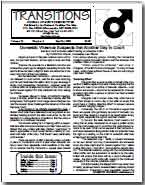
The Australian Institute of Health and Welfare (AIHW) report on men’s health focuses the spotlight on widely unrecognised aspects of male health. This could mean that policy can now address men’s health in a much more holistic manner.
The report examines the health of Australian men in five different population groups: Aboriginal and Torres Strait Islander status, remoteness, socioeconomic disadvantage, region of birth and age. It shows that the health of significant numbers of men and boys in Australia is far worse than it could or even should be.
The change in approach – away from a medical and behavioural focus – is a new and important step forward because it considers the social determinants of health, that is, those factors that shape a person’s health status from before birth and right through life.
While this should be obvious, it’s taken a long time for policymakers to recognise it, and to effectively tackle the problems that result in poorer health outcomes for men and boys, whether it’s because of cancer, suicide, stroke, accidents, or any of the many other causes of earlier male mortality.
Some interesting findings
One of the most intriguing questions raised by the report is why males born overseas have fewer risk factors than men born in Australia. This surely needs further exploration.
The report shows a clear link between socioeconomic status and health, highlighting the need to raise the standards of the poorest in our society. It celebrates the fact that 68% of males are employed, which is important because research shows employment has a major impact on health.
The health problems faced by Indigenous Australians are well-reported and this document sheds some much-needed light on the numerous, cumulative factors that result in life expectancies of a full 11 years less than their non-Indigenous counterparts (in some places, it’s as high as 20 years earlier).
But it’s important to highlight one of the major factors influencing Aboriginal and Torres Strait Islander life expectancy – incarceration. The report shows that Aboriginal and Torres Strait Islanders make up 26% of the prison population in Australia, yet they make up just 2.5% of the general population.
The continued cycle and the ingrained culture of men going into and returning to prison is easy to dismiss as the lot of “delinquent men” or just another social problem. But this is, in fact, a product of social environments that are so deeply compromised, and so heavily stacked against living a “normal” life that one wonders why the figure is not much higher.
Many Indigenous boys grow up seeing many or all of their close male relatives in the cycle of imprisonment and the sad, awful truth is that for many, prison is a more certain, more friendly and less threatening place than outside society.
The bigger picture
This document should be considered alongside the recent report issued by Ernst and Young and the Inspire Foundation on young men’s mental health. That report showed that male mental health is faring badly – suicide is among the top causes of male death with five male suicides every day – and what that’s costing Australian society.
Together, the two reports illustrate a deep consistency about the need to consider all of the social, biological and physical environments of boys’ and men’s lives to effectively improve their health and well-being.
The establishment of the National Male Health Policy in 2010 was a good start but there’s a clear need to move away from the emphasis on the medical approach of end-stage diseases and the focus on behaviour.
All health is shaped by the social environment and it’s as important to consider this in the policies we make and action we take for better men’s health, as much as whether men do or don’t look after themselves.
Programs in the National Male Health Policy that are working are doing so because they take this into account. Given what the reports discussed here have found, there will never be a better time to invest in better health outcomes for boys and men – for the sake of the whole of society.


